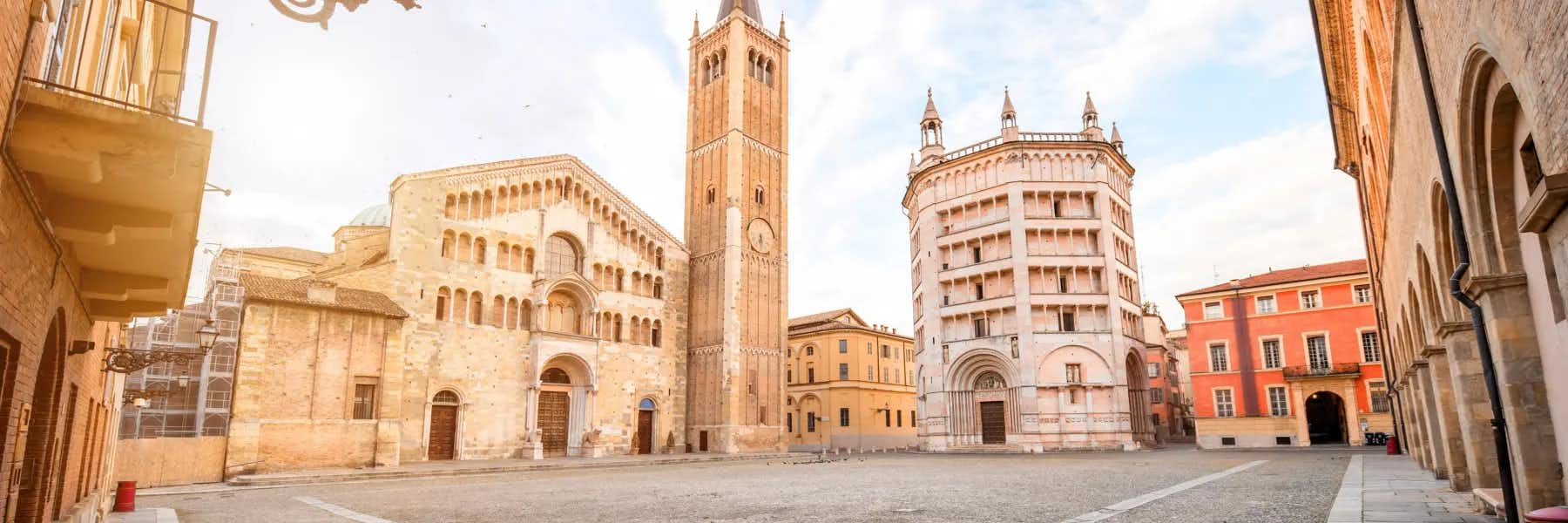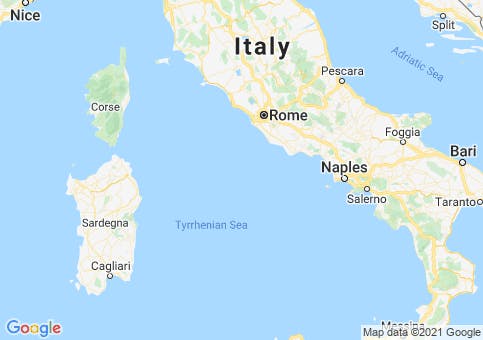By Valerie Schneider
As far as Italian art cities go, the headlines usually focus on flashy Florence, eternal Rome, glittery Venice, and vivacious Naples. But often overlooked Parma is a real charmer.
Positioned in the northern region of Emilia-Romagna, a center of arts and central to everything, Parma rests between the Po Valley and the foothills of the Apennine range. It is also located along the ancient Via Emilia, the Roman road that ran the length of the vast valley from Piacenza to Rimini. Sliced in half by the Parma River, which lazily meanders through it, Parma is best experienced at a slow pace.
Parma is packed full of Renaissance glories, lush green spaces, and boasts dozens of museums and performing arts. And, as the nation’s culinary capital, it also has a delicious reason to be on your shortlist of retirement destinations.
Retire in Parma
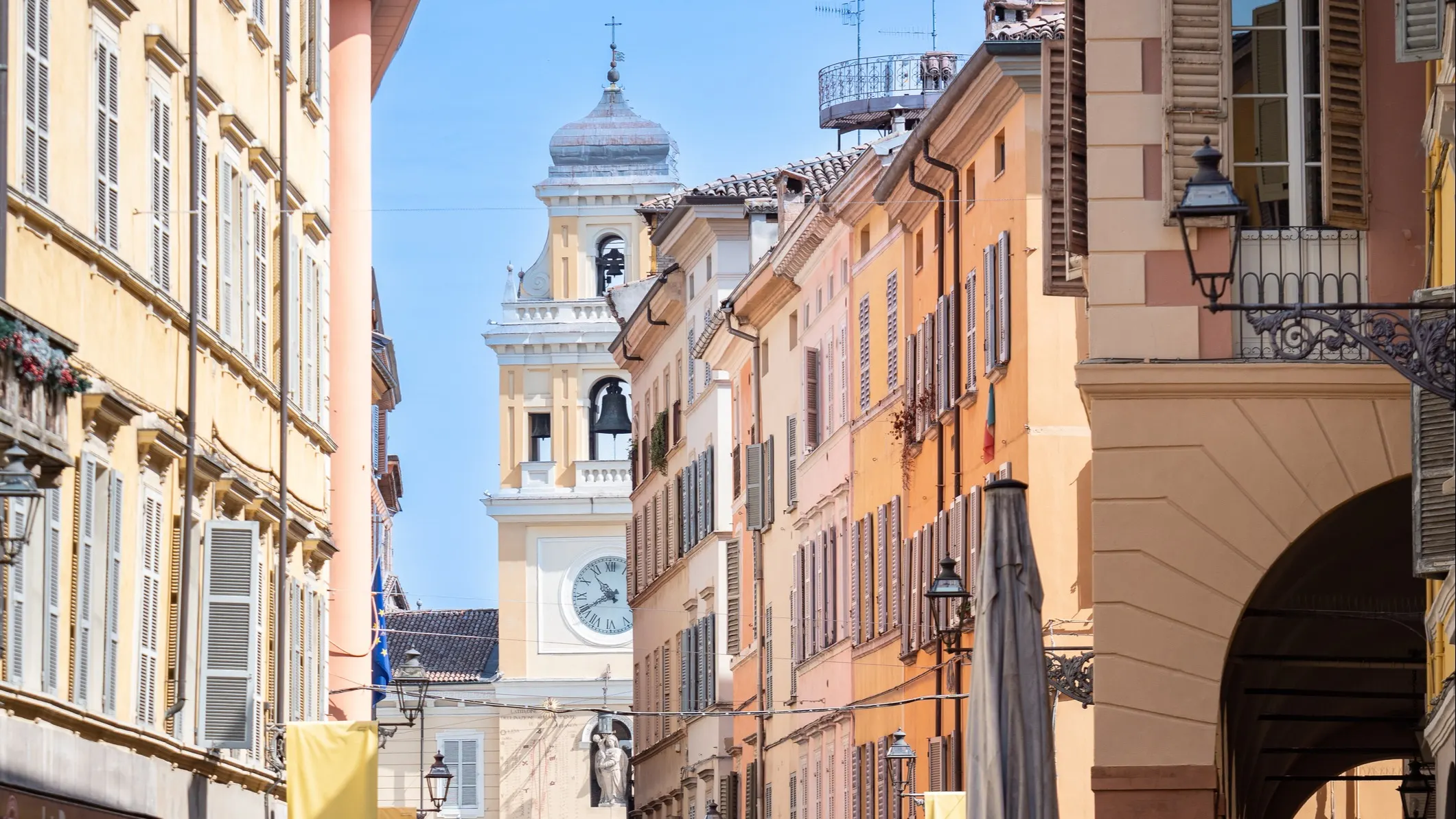
Most of the city’s life happens in the glorious historic center or the immediate periphery. Everything you need is close at hand, and the preferred mode of transport is the bicycle. The streets are a mix of cobbles and river stones with “tracks” paved on them for bikes. The perfectly-kept pastel buildings of the old town are punctuated by breathtaking piazzas and Renaissance palaces, giving you something to look at everywhere you go, and because it’s in the valley, and flat, walking is easy.
Parma has a notable university that infuses the city with youthful vigor, but doesn’t overlook the more mature audience. There are cultural activities, concerts, and parks galore. The center of the city is the art-filled cathedral, home to many masterpieces, and its tall layer-cake baptistery next door.
The Emilia Romagna region is known for its quality agricultural production, and out in the countryside you’ll see vast cultivated fields, fruit orchards, vineyards, and livestock. They fuel the famed producers of prosciutto, parmigiano, balsamic vinegar, and many other high-quality products that create some of the country’s most acclaimed dishes.
Parma doesn’t experience extremes in terms of temperatures, tending instead to be humid year-round. Summers can get some very warm days, but average highs run in the low to mid 80s F. Winters bring rain and colder temperatures that average between 39 F to 45 F. Winter nights will likely dip below freezing.
Italy’s national healthcare system is ranked at number two by the World Health Organization, giving you excellent medical care, whether you choose the private or public facilities that are available in Parma. There is a large, well-noted hospital along with smaller clinics, outpatient facilities, and privately-run specialists and clinics.
Get Your Free Italy Report Today!
Get Your Free Italy Report Today!
Learn more about Italy and other countries in our daily postcard e-letter. Simply enter your email address below and we’ll send you a FREE report – Italy: Europe’s Most Seductive Country.

By submitting your email address, you will receive a free subscription to IL Postcards, Overseas Dream Home, The Untourist Daily and special offers from International Living and our affiliates. You can unsubscribe at any time, and we encourage you to read more about our Privacy Policy.
Lifestyle in Parma
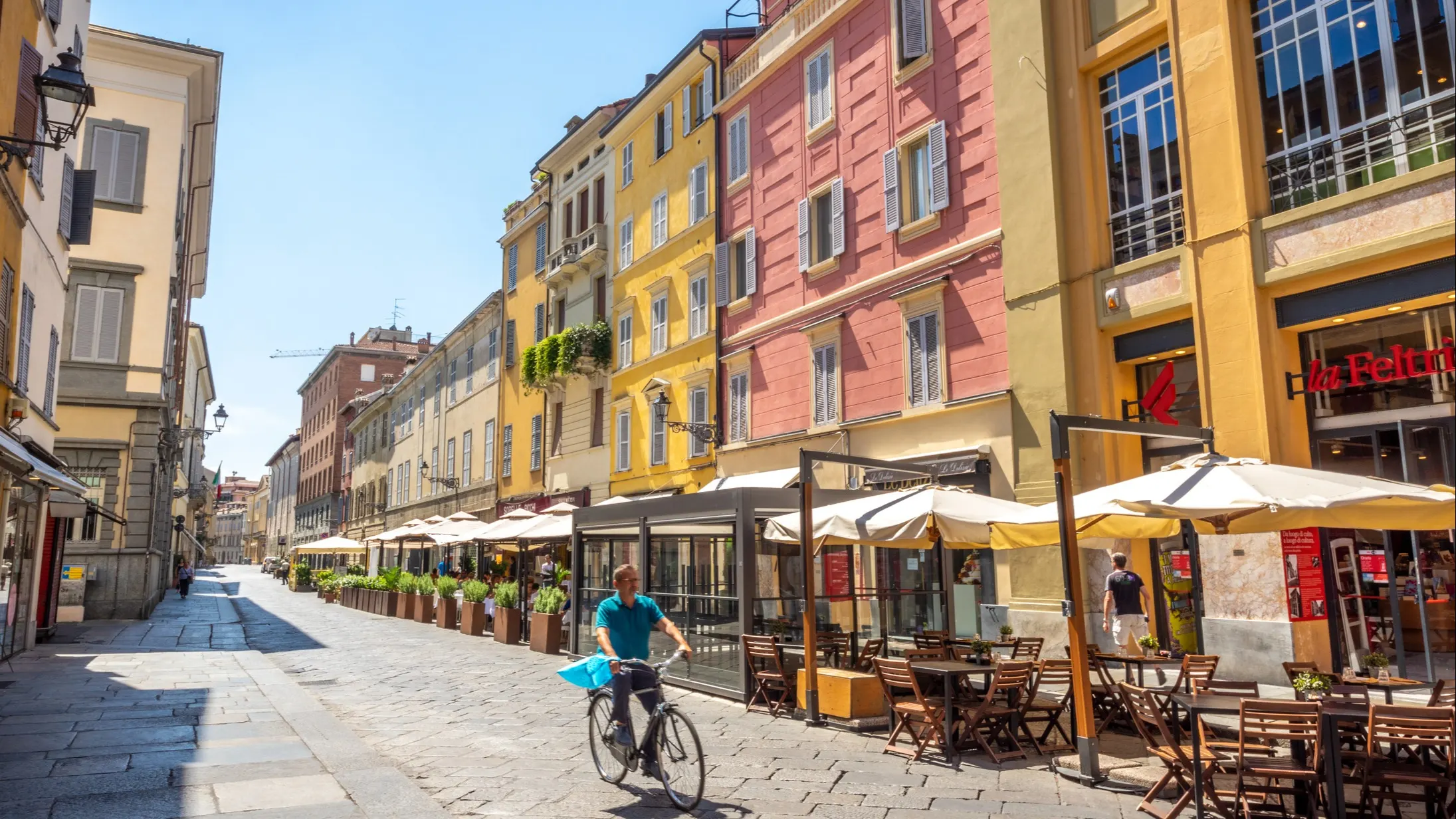
Parma is a vibrant and sophisticated city that is consistently ranked as one of the most livable cities in Italy. With a university to keep things youthful but also enough cultural pursuits for every age group, Parma is a city that appeals to a wide range of people. There are dozens of museums, dramatic theaters, gloriously decorated churches, and plenty of art, both classic and contemporary. Parma will hit a high note with music lovers, as it gave us Paganini, Toscanini, and Verdi, and serves up operas, and a fine philharmonic orchestra.
With a population of about 190,000, the city is large enough to offer lots of services and small enough to walk across in around a half-hour. The city’s focal point is the grand Piazza Garibaldi with the art-filled cathedral, home to many masterpieces, and its tall layer-cake baptistery next door. Sidewalk cafes grace the perimeter, and from here Strada della Repubblica unfurls, hosting antique palazzi and posh boutiques. But all over the centro storico (historic center) are clean, well-tended neighborhoods with piazzas, cafes, shops, and restaurants offering the gamut from humble trattoria to fine dining.
Parma loves its aperitivo and Via Farini is the place everyone turns out for a pre-dinner drink, a few nibbles, and a chat. It’s a carnival-like atmosphere nearly every evening with tables taking up space instead of cars, and the area’s wines flow freely.
With decadent filled pasta like tortelli, fresh-made strands of tagliatelle swaddled in rich meat sauce, and wine-stewed meat dishes, Parma is made for gourmands. Dreamy well-aged cheese, melt-in-the-mouth prosciutto go nicely with the selection of locally produced frothy wines.
Parma is graced by an unusual amount of green space; the spacious Parco Ducale is a revered favorite, right in the middle of the city, but there are others scattered around town. The city gives way quickly to the countryside, and going south, to the foothills of the Apennines. All around the area, stately castles appear, looming over trees and lending historic allure to country outings. The castles collectively comprise a UNESCO World Heritage Site.
Parma offers good transportation options with rail lines running to all the main cities in the region and beyond for easy access to all of Italy. Regional buses reach the smaller towns of the area, and the airport provides a handful of flights around Europe, while around 90 minutes away, the larger airport in Bologna provides you with greater reach.
Get Your Free Italy Report Today!
Get Your Free Italy Report Today!
Learn more about Italy and other countries in our daily postcard e-letter. Simply enter your email address below and we’ll send you a FREE report – Italy: Europe’s Most Seductive Country.

By submitting your email address, you will receive a free subscription to IL Postcards, Overseas Dream Home, The Untourist Daily and special offers from International Living and our affiliates. You can unsubscribe at any time, and we encourage you to read more about our Privacy Policy.
Cost of Living in Parma
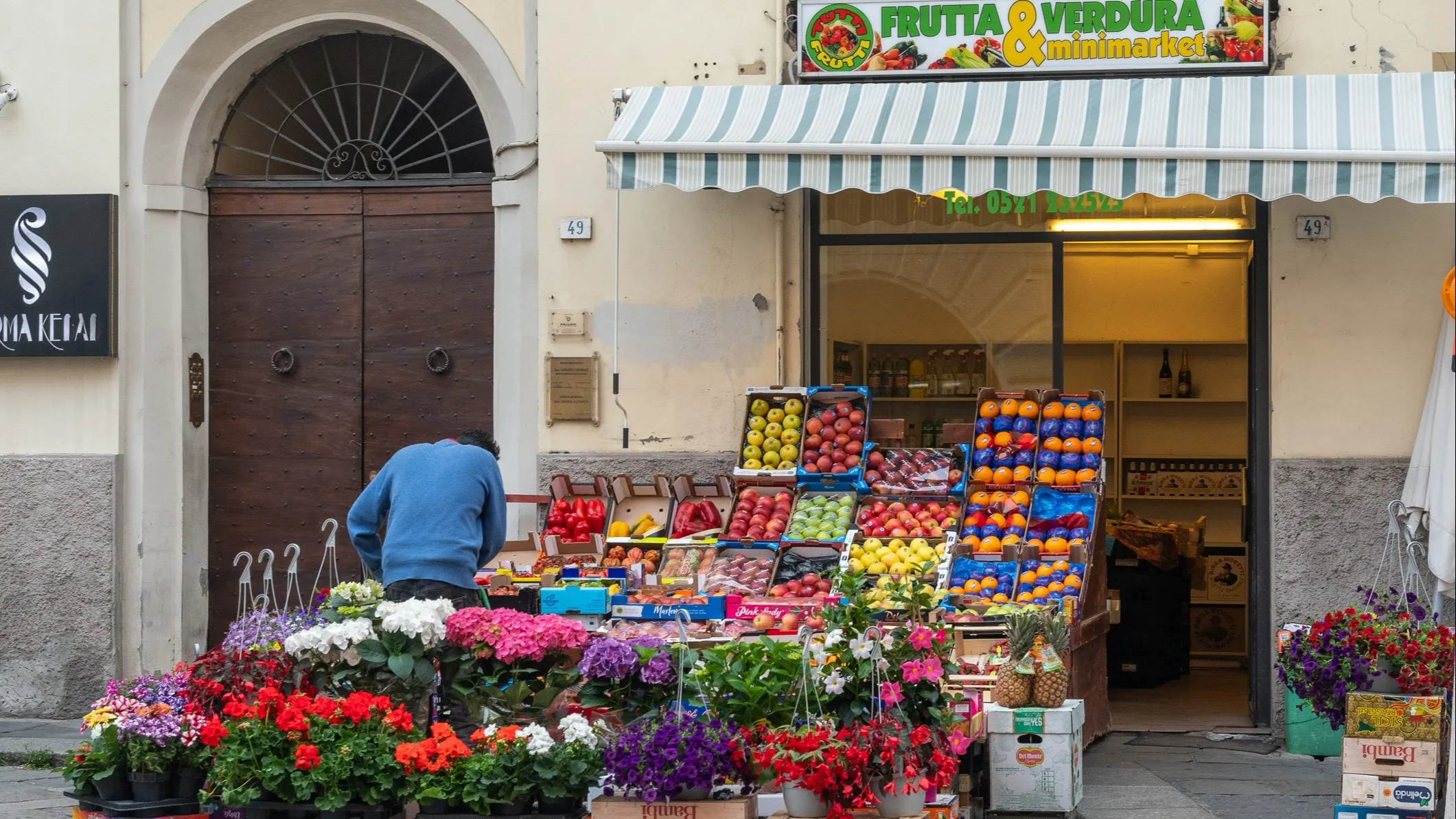
Despite its ranking among the top five most livable cities in Italy, prices here aren’t astronomical. Current listings show nice rentals in the city center ranging from $585 for a smart one-bedroom apartment up to $1,522 for a penthouse-type apartment in a palace with frescoed ceilings. Expect to pay between $800-$1,000 a month for a spacious home in the center.
Real estate prices in the centro storico run the gamut from $114,000 to $1.4 million. Expect to pay upwards from $221,000 for an average city apartment.
Apart from housing costs, Parma carries a moderate cost of living. The prices of produce and groceries are on average with the rest of Italy, and while there are Michelin-rated trendy restaurants, you’ll just as easily find an affordable trattoria for a meal out. Plus, you have a selection of prosciutto and cheese at enviable prices.
In a food town like Parma, you'll naturally want to dine out to sample all those delicacies. You can enjoy a full carefully crafted meal in a notable restaurant made from regional products with a good local vintage for about $200 for two, perfect for those evenings at an art opening or the theater. But there are plenty of budget-friendly options for normal days. A trattoria meal of pasta with a glass of table wine is a reasonable $20, while a pizza and beer will run you just $13.
Like most places in Italy, an espresso will cost you about $1 while a cappuccino is about $1.50. Parma loves its aperitivo tradition, so that pre-dinner drink in Via Farini is a fun way to wind down the day, and a drink with nibbles will cost you only about $10.
A bus ticket around town is $1.39 while a monthly bus pass is $34.68. A train trip to Bologna costs $8.40 one way, while the 90-minute trip to Milan will cost you about $15.
Here’s an example of a monthly budget for a couple living in Parma:
| Expense | U.S $ |
|---|---|
| Rent (two-bedroom apartment) | $800 |
| Utilities (electricity, garbage, and water) | $250 |
| Cell phone | $50 |
| Groceries | $300 |
| Internet | $30 |
| Dining Out | $200 |
| Monthly Bus pass | $34.68 |
| Total | $1,664.68 |
Featured Image Copyright: ©iStock/efesenko
Get Your Free Italy Report Today!
Get Your Free Italy Report Today!
Learn more about Italy and other countries in our daily postcard e-letter. Simply enter your email address below and we’ll send you a FREE report – Italy: Europe’s Most Seductive Country.

By submitting your email address, you will receive a free subscription to IL Postcards, Overseas Dream Home, The Untourist Daily and special offers from International Living and our affiliates. You can unsubscribe at any time, and we encourage you to read more about our Privacy Policy.
10 Best Things to Do in Parma Italy
By Chloe Lay
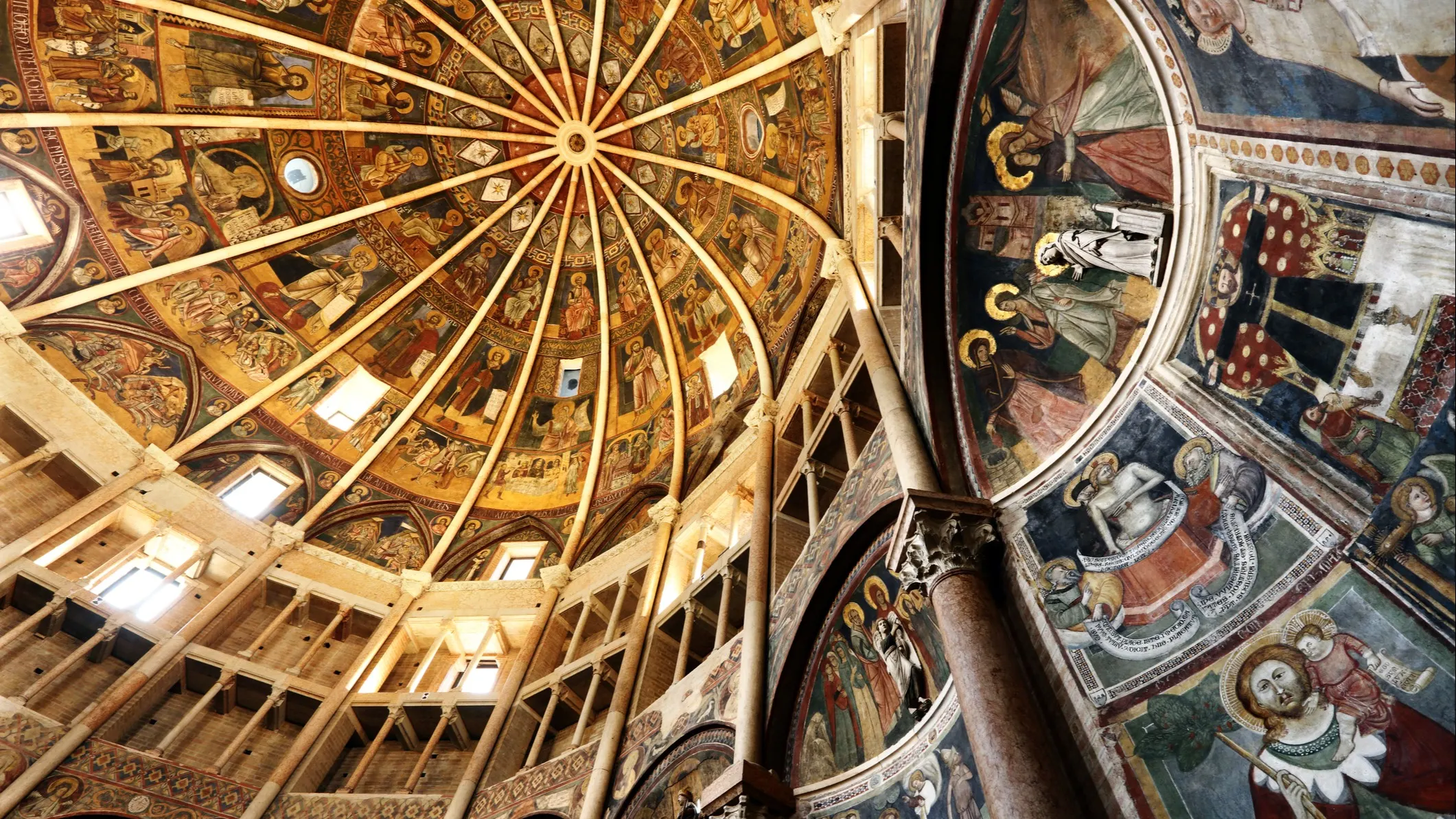
Italy is home to a number of hugely popular tourist destinations—Venice, Rome, and Florence, to name just a few. But there are also several Italian cities and towns that tourists tend to overlook, and Parma is one of them.
Parma is a city in Emilia-Romagna, a region in the north of Italy renowned for its contributions to Italian food culture. Both Parmesan cheese and Parma ham (prosciutto di Parma, if you want to call it by its Italian name) are made in this beautiful city. Its numerous other culinary delights mean it should be high on the travel bucket list of any foodie.
But it’s not just a food lover’s paradise. In 2020, Parma, Italy was also named Italy’s Capital of Culture. This was unsurprising, really, as it has a rich and interesting history. It was one of the social and political hubs of the Italian peninsula from as early as the Etruscan and Roman periods, and this continued through the Middle Ages and well into the Renaissance era. Beautiful Romanesque architecture can be found throughout the Centro Storico and beyond, and the University of Parma, established in 1601, is one of the oldest in the world.
All this means that there’s plenty to keep tourists and visitors busy during their stay. If you’re planning a trip to Parma, here are 10 things you simply cannot afford to miss.
1. Marvel at the Dome of Parma Cathedral
The Duomo di Parma, or Parma Cathedral, is an impressive and incredibly old structure characteristic of the Romanesque architectural style. Romanesque architecture, the precursor to the better-known Gothic style, is typified by its use of semi-circular arches, which can be seen all over both the exterior and interior of this vast church.
Construction of this building began in 1059. After its completion, around 50-years later, it was damaged by an earthquake, and much of it had to be restored.
Take a stroll around the perimeter of the building to fully appreciate the size of it, and make sure you get a good look at the façade, which dates back to 1178. When you’ve had your fill of the external view, head inside to appreciate the marvelous interior.
Make sure you don’t miss the spectacular fresco on the cupola (the dome’s interior) up at the front. It was painted in the 1500s by Antonio da Correggio and shows the assumption of the Virgin Mary, surrounded by a whole host of angels and cherubs. It’s quite dizzying.
2. Visit the Baptistery
When you leave the cathedral, head just next door to take in Parma’s pink-marbled baptistery. This is an important structure that blends the Romanesque style with early Gothic elements; it’s a highly unusual building.
It has an octagonal structure covered with rounded and squared arches, four tiers of loggias, and incredibly ornate engravings and statuary dotted around the exterior doors. The first thing you’ll notice about this building will be its color. The baptistery is completely covered in a pale pink marble, which hails from nearby Verona.
Construction of the baptistery took over 100-years to complete, but it was worth the effort. Head inside to see an imposing marble baptismal basin, a painstakingly frescoed cupola, and a truly exceptional gallery.
3. Explore the Palazzo della Pilotta
This considerable palace is a symbol of the enduring potency of the area’s former ducal power, the Farnese family. Members of the Farnese family were dukes of both Parma and Piacenza during the Renaissance, and one of their line even became pope in the 1530s. Pope Paul III, to be precise.
The palace complex of Palazzo della Pilotta was built by Ottavio Farnese in the 1580s, and while much of it has since been destroyed, it still makes for a remarkable visit.
Explore the grounds and feast your eyes on the treasures of the Palatine Library and the building’s monumental staircase, all while learning more about the fascinating history of this powerful dynastic family. A visit to this palace will help you to fully appreciate the extent of Parma’s former power.
4. View Masterpieces at the National Gallery of Parma
Climb the monumental staircase inside the Palazzo della Pilotta, and you’ll arrive at Parma’s National Gallery. Here, you can see a wide array of spectacular art by some of the Italian masters of painting: Tintoretto, Correggio, da Vinci, and Parmigianino (named for his local heritage, this artist’s name literally means “the little Parmesan”).
The gallery specializes in paintings from the regions of Emilia-Romagna, Tuscany, and Veneto. Particular highlights include Correggio’s Martyrdom of Four Saints, van Dyck’s Madonna and Child, and a portrait of Alessandro Farnese by Girolamo Mazzola Bedoli. It’s well worth a visit.
5. Immerse Yourself in the Teatro Farnese
Also found within the Palazzo della Pilotta is the Farnese Theater. This is another sight that’s not to be missed during your trip to Parma.
This theater is a stunning venue that instantly conjures up an image of wealthy Parmesans enjoying a night on the town during the 1600s. It was built in 1618 from wood and plaster before being painted to make the structure resemble marble—much more impressive. The area in front of the stage was even flooded on special occasions so that dramatic naval battle scenes could be performed.
It’s thought to be the first proscenium theater that was built to be permanent. However, the structure you see today was actually built in 1962, as the original was unfortunately destroyed during World War II. This doesn’t make the theater any less interesting or grand, though, so make sure to stop by as you explore the palace’s grounds.
6. Parco Ducale
Once you’ve had your fill of the main sights of Parma and the Palazzo, head toward the train station and hire a bicycle to see Parma the way the Parmesans do. Bikes are found everywhere in Parma, and it can be great fun to cycle through the city’s narrow streets and alleyways.
If you’re looking for a bit of fresh air and greenery, ride to the Parco Ducale. This large green space is situated within the Oltretorrente neighborhood (Oltretorrente literally means “over the river”—it’s the area across the River Parma from the city center). It’s a great place to ride bikes, explore the ornamental gardens, or just sit and relax. Take a load off.
7. Enjoy Aperitivo in Piazza Garibaldi
Piazza Garibaldi is a large, open square in the city’s center, with the town hall and a governor’s palace as the main focal points. It’s a great place to sit and watch the world go by, but it’s even better as an aperitivo spot.
Aperitivo is an Italian tradition. Come six o’clock, people all over the country will have left work and be finding a space at a bar for a drink and a snack. The specifics vary from region to region and even town to town. Venice, for example, is known as the home of the Aperol spritz. In Parma, you’re more likely to be served a glass of local Lambrusco (a sparkling red wine) and either some chips and olives or a selection of local cured meats and cheeses.
Join the locals in this large square and enjoy a pre-dinner drink and snack. It’s all part of la vita bella.
8. Feast on Local Delicacies
Once you’ve finished your aperitivo, you’ll want to eat something more substantial, and you’ll be spoiled for choice. Parma is home to a whole host of local specialties and eating out in this city is something you’re not likely to forget.
Find a restaurant that serves up local food and get to work. Some of the most famous local foods are Parmesan cheese (usually served in a large block on a plate as an appetizer) and Parma ham, a cured meat that has become wildly popular all over the world.
Other local delights include Culatello di Zibello, Spalla Cotta di San Secondo, and classic Salame Felino—all cold cuts—as well as porcini mushrooms, black and white truffles, and gorgeous fresh pasta. Horsemeat is also popular in Parma, and you’ll find it served in stews, in burgers, and even as a tartare (i.e., raw). Tartare di cavallo is not for the fainthearted. Still, if you’re brave enough to try it, you’ll be rewarded with succulent and incredibly flavorsome meat. Give it a go.
9. Get Lost in the World’s Largest Maze
Not many people know this, but Parma Italy is actually home to the largest maze in the world—and it’s open to tourists. It’s a little out of the city center, but it’s easy enough to reach it either by car (around 20-minutes) or bus (roughly an hour).
If you want an idea of the sheer enormity of this labyrinth, it sprawls out over around 8-hectares of land—roughly equivalent to 16 American football fields. The paths within the maze are around 1.86-miles long. It really is huge.
Pack up a picnic and get lost in this gigantic space. At the center, you’ll find a large open square that’s often used for concerts and shows. Elsewhere in the maze is a highly unusual pyramid-shaped chapel.
The ticket price to the Masone Labyrinth also includes access to the rest of the complex; there’s a library and a vast collection of art, so if it starts raining, you’ll still have something fun to do.
10. Go to the Opera
Parma is respected by opera buffs all around the world as one of the musical style’s leading lights. The great Italian opera composer Giuseppe Verdi was born around 18-miles away from the city and was almost “adopted” by the Parmesans as one of their own. His contributions to the art form have been enduring and going to the opera in Parma is essential for cultural thrill-seekers.
Before you arrive in Parma, book tickets to a performance at the Teatro Regio, one of Italy’s three most famous opera houses. They put on an annual Verdi festival, but performances of various works take place throughout the year.
The opera house seats 1,400 and has a magnificent interior—even if you’re not into classical music, it’s worth taking a guided tour of the building to get a glimpse inside. Tours run in English or Italian every hour from Tuesday to Saturday, or you can pay a little more to enjoy an extra-special tour with a focus on the antique organ; this tour ends with a short performance of a few songs on the organ, so it’s a good option if you want to hear some live music but don’t have time to see a full opera.
Conclusion
Parma Italy is a fantastic city to visit as a tourist. There’s plenty to do that will keep you occupied during your stay, and the food and drink options available around the city should be enough to keep even the fussiest of foodies satisfied. From important Romanesque architecture and churches to opera houses and outdoor mazes, there’s such a variety of tourist activities that it’s impossible to be bored.
The city is beautiful, friendly, and rich in history, so book a trip today and enjoy your stay in one of Italy’s best cultural hotspots. You won’t regret it.
Get Your Free Italy Report Today!
Get Your Free Italy Report Today!
Learn more about Italy and other countries in our daily postcard e-letter. Simply enter your email address below and we’ll send you a FREE report – Italy: Europe’s Most Seductive Country.

By submitting your email address, you will receive a free subscription to IL Postcards, Overseas Dream Home, The Untourist Daily and special offers from International Living and our affiliates. You can unsubscribe at any time, and we encourage you to read more about our Privacy Policy.
